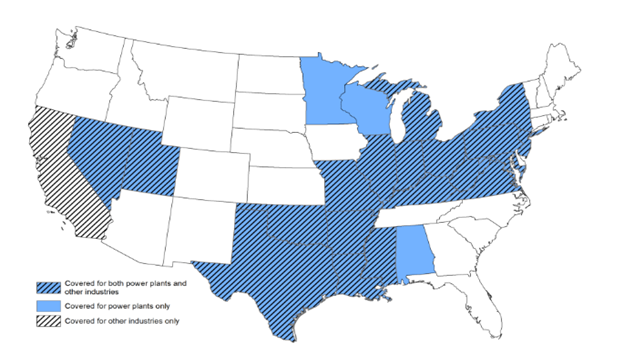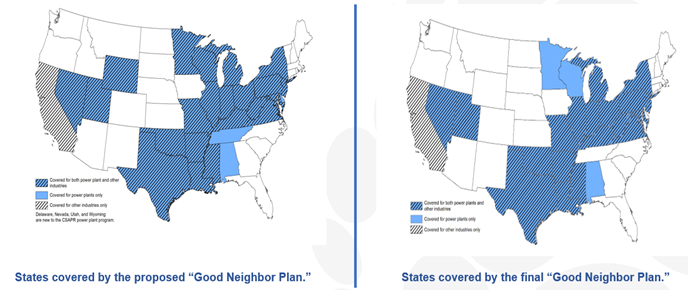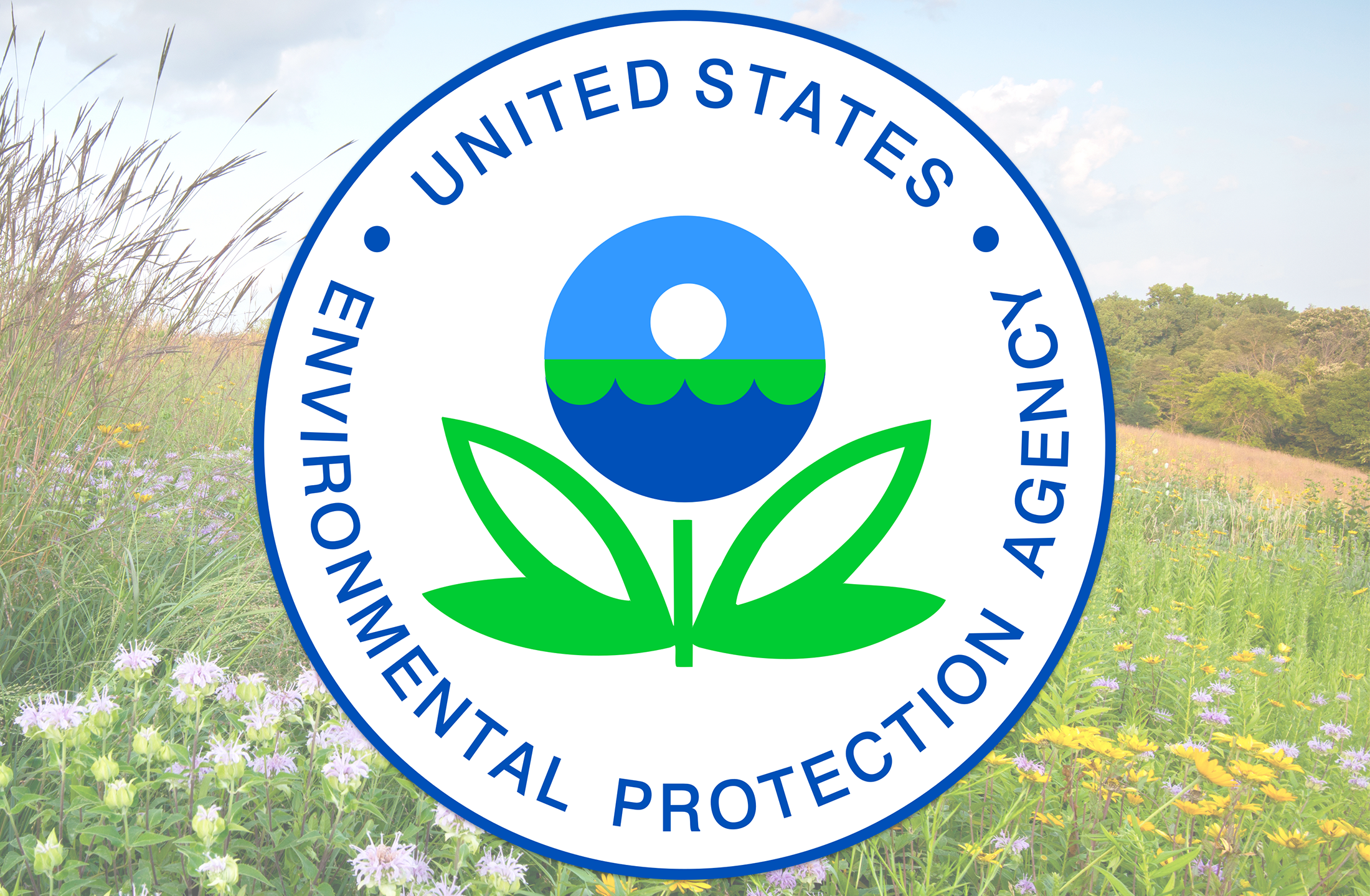UPDATE: EPA Publishes Final Good Neighbor Plan In Federal Register
On June 5, 2023, EPA published the final Federal “Good Neighbor Plan” for the 2015 Ozone National Ambient Air Quality Standards in the Federal Register. The rule effective date is August 4, 2023. A copy of the Federal Register version of the final rule is available here. Read below our previous News Post concerning the final rule.
On March 15, 2023, the EPA Administrator signed the final Federal “Good Neighbor Plan” for the 2015 Ozone National Ambient Air Quality Standards and submitted the rule for publication in the Federal Register. A copy of unofficial internet version of the rule is available here. The rule will become effective sixty (60) days after the date of publication in the Federal Register. VIM Technologies (VIM) will post an official copy of this rule once it is published in the Federal Register. EPA is issued this rule under the “good neighbor” or “interstate transport” provision of the Clean Air Act (CAA or Act). The final Good Neighbor Plan Rule includes several key components discussed below. Additionally, the final rule added several provisions designed to promote consistent operation of emissions controls. For example, the rule now includes a backstop daily emission rate in the form of a 3-for-1 allowance surrender for NOx emissions from large coal-fired units that exceed a protected daily NOx emission rate (reference Item 2 below).
1. Beginning in the 2023 ozone season, the Cross-State Air Pollution Rule (CSAPR) NOx Group 3 Ozone Season Trading Program (40 CFR Part 97, Subpart GGGGG) would be expanded from the current twelve (12) affected States to 22 States. The ozone season is defined as May 1 through September 30. The States include: Alabama, Arkansas, Illinois, Indiana, Kentucky, Louisiana, Maryland, Michigan, Minnesota, Mississippi, Missouri, Nevada, New Jersey, New York, Ohio, Oklahoma, Pennsylvania, Texas, Utah, Virginia, West Virginia, and Wisconsin. Nevada and Utah are new to CSAPR. Delaware, Tennessee and Wyoming were removed from the final rule. Reference Figure 1 below. EPA is deferring final action of Tennessee and Wyoming pending additional evaluation of updated modeling and analysis. Moreover, EPA plans to further review modeling data for Arizona, Kansas, Iowa and New Mexico because updated 2023 modeling suggests that these four states may be significantly contributing to nonattainment in downwind States.
2. The final CSAPR Group 3 Rule includes a backstop provision designed to promote more consistent emissions control by individual EGUs affected by the trading program. “Starting with the 2024 control period for coal-fired EGUs with existing SCR controls and the earlier of the 2030 control period or the control period after which an SCR is installed for other large coal-fired EGUs, a daily NOx emissions rate of 0.14 lb/mmBtu will apply as a backstop to the seasonal emissions budgets (which are based on an assumed seasonal average emissions rate of 0.08 lb/mmBtu for EGUs with existing SCR controls). Each ton of emissions exceeding a unit’s backstop daily emissions rate, after the first 50 such tons, in a given control period will incur a 3-for-1 allowance surrender ratio instead of the usual 1-for-1 allowance surrender ratio.”
3. The final CSAPR Group 3 Rule establishes State emission budget that decline over time. The final 2027 budget for EGUs reflects a 50% reduction from the 2021 ozone season NOx emission levels. Additionally, emissions budgets would be updated annually beginning 2030 to account for power generation modifications such as newly retired units and new generating units.
4. Effective May 1, 2026, non-EGUs in twenty (20) states would be required to meet NOx emission limits during the ozone season. The non-EGU compliance requirements were removed for Michigan, Wisconsin, Delaware and Wyoming. Reference Figure 2 below. NOx emission limits would apply to the units in the specific industries listed below. Contingent on EPA’s approval, individual facilities may obtain a one year extension for compliance. Additionally, provided that certain criteria are met, EPA may approve an additional compliance extension of up to two (2) more years.
- Reciprocating internal combustion engines in Pipeline Transportation of Natural Gas,
- Kilns in Cement and Cement Product Manufacturing,
- Furnaces in Glass and Glass Product Manufacturing,
- High-emitting, large boilers in Basic Chemical Manufacturing, Petroleum and Coal Product Manufacturing,
- High-emitting, large boilers in Pulp, Paper and Paperboard Mills


Please reach out to our COMPAS group at compas@vimtechnologies.com if you’d like a regulatory specialist to discuss the impact these Rule changes have on your system, or our support group at suport@vimtechnologies.com to discuss updates to your DAHS in order to comply with the changes.




